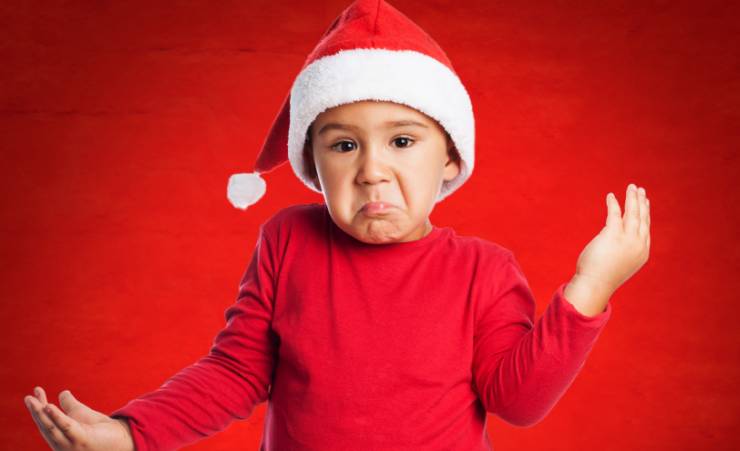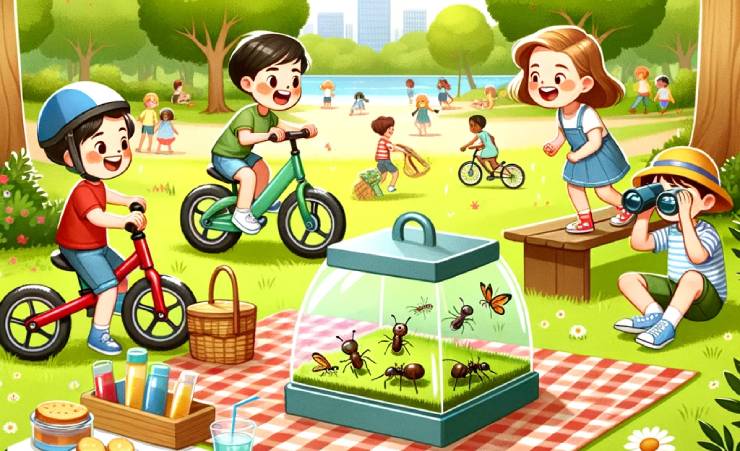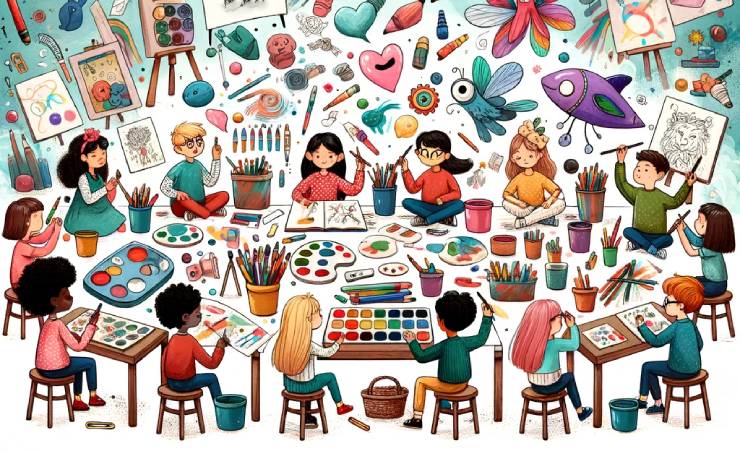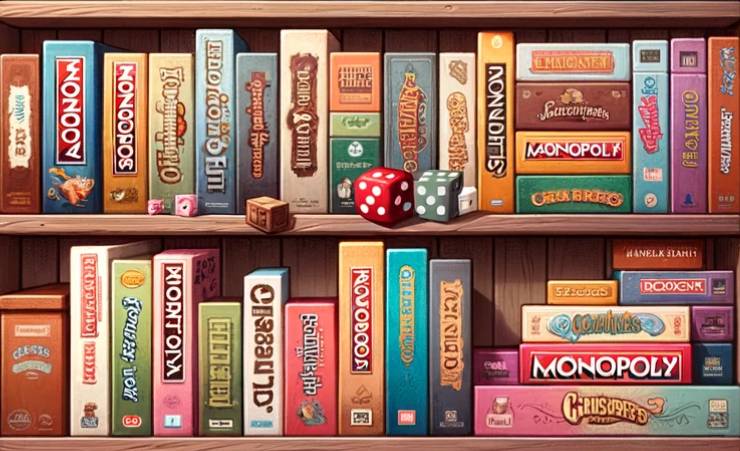The holiday season is upon us, and the quest for the perfect Christmas gifts kids will love is once again stressing our lives. But what is the magic number? How much should you spend on Christmas gifts or buy something more intangible? We’ll go through all the various gift-giving rules and, of course, that magic number of how many gifts your child should get.
5 Key Takeaways
- The Rule of Three Gifts suggests giving one gift for each baby Jesus received.
- The Four-Gift Rule recommends something you want, something kids need, something to wear, and something to read.
- Budgeting is crucial for fulfilling your gifting experience. The guide offers a range of options to suit different budgets, emphasising that meaningful gifts don’t have to be expensive.
- Aligning your gift choices with your family’s values and the child’s interests suggests that the best gifts can ignite passions or offer new perspectives.
- Overgifting of presents can lead to materialistic attitudes and a lack of appreciation in children. It advocates for a more thoughtful approach focused on meaningful, enriching gifts.
Gift Rule: Setting Realistic Expectations & Budget

Family Size and Budget
The number of Christmas presents under the Christmas tree can vary dramatically from one household to another, which is often influenced by two primary factors: family size and budget. How many presents should a kid actually get for Christmas? The sheer number of Christmas presents in larger families can create an overwhelming spectacle, but is each gift meaningful? While smaller families might have the financial leeway to spend on Christmas, does this abundance serve the child’s best interests or merely satisfy the parents’ desire to provide?
Budgeting for gifts kids get at Christmas is akin to walking a tightrope. On one end, you have the financial constraints of raising a family—bills, groceries, and other necessities. How many gifts to give is a big question. Conversely, the societal pressure to make Christmas a lavish affair looms large. How do you decide how many presents to give? Financial experts often recommend setting aside a specific “Christmas fund” throughout the year to gauge what you can realistically afford without dipping into essential funds.
Personal Values and Realistic Expectations
Gift-giving at Christmas should align with your family values, almost like planting a seed that will grow over time, instilling virtues like gratitude, humility, and the joy of giving in your children. Do you value education? Books or educational games could get your child more interested in learning. Is spending quality time as a family important? Give your kids board games or a family camping trip as a way to help your kids value this time together.
Having an open dialogue with your children at Christmas about what to expect is crucial. This mum and dad conversation manages their expectations and provides an opportunity to impart valuable life lessons. For instance, discussing something your child actually needs versus “wants” can be an eye-opening experience for a child, offering them a different perspective on the value of material possessions. Some families even adopt the gift rule of three gifts to maintain a balance. Whether it’s stocking stuffers or bigger gifts, it’s all about finding that perfect balance.
Making a List with Your Child

Making a Christmas list can be more than just a whimsical activity; it can be a lesson in prioritisation and decision-making. Sit down with your child and discuss what they genuinely wish for, something they want, but also guide them in understanding the limitations. Wondering how much to spend or how many presents a child should get? This is an opportune moment to introduce the concept of quality over quantity. Would they prefer several small, less meaningful gifts, or one larger, more significant gift they’ve been yearning for?
Setting Limits and Sticking to a Plan
Once the list is made, the next step is to set boundaries. Think of this as setting the stage for a play; the boundaries help to define the action, keeping it within a manageable scope. Plan Christmas carefully and decide on a Christmas budget. Whether you decide on a fixed number of gifts a child should get or a set spending amount, make it a rule to stick to the plan. It’s easy to get swept up in the holiday fervour, especially when faced with last-minute deals and discounts. However, spending too much can set a precedent for future expectations and may inadvertently contribute to a sense of entitlement or even credit card debt.
Being Content With One Gift For Christmas
The Importance of Moderation
In a world where excess is often celebrated, moderation can seem almost revolutionary. Yet, it’s a principle that holds immense value, mainly when applied to giving presents at Christmas. Imagine a feast where every dish is your favourite; the first few bites are heavenly, but as you continue, the flavours blend, losing their individual charm. Similarly, when children receive many presents on Christmas morning, the significance of each one can become diluted. Christmas is one such occasion where the lesson here is simple yet profound: quality trumps quantity.
Moderation in giving presents is not about deprivation; it’s about enrichment. It’s about teaching children to savour the joy of receiving a gift chosen with care and thoughtfulness. It’s about instilling a sense of gratitude and appreciation that can only be fully realised when the focus is on the value of the gift, not its volume.
The Impact of Overgifting
The consequences of overgifting extend far beyond the immediate thrill of unwrapping multiple presents. Studies in child psychology suggest that excess material goods can lead to a range of adverse outcomes, from decreased motivation to a sense of entitlement and even materialistic attitudes later in life. It’s akin to spoiling a good meal with too much salt; the core ingredients lose their essence.
Overgifting can also create an emotional burden for children. They may feel overwhelmed by the sheer number of gifts they get at Christmas, leading to a lack of appreciation for each gift. This can be a slippery slope, fostering a mindset where material possessions are equated with happiness or self-worth, a notion that is unrealistic and potentially damaging in the long run.
The True Essence of Christmas
At its core, Christmas is not a commercial event but a celebration of love, family, and togetherness. The gifts we give should serve as an extension of these values, tokens that carry emotional weight rather than just material value. Think of each offering as a chapter in a book; it should add to the narrative, not overwhelm it.
The true essence of Christmas can be captured in a single, well-thought-out gift that resonates with the child’s interests, needs, or dreams. It’s not about the price tag or the brand; it’s about the love and thought that went into selecting that particular gift. After all, isn’t the holiday season more about the spirit of giving than the act of accumulating?
How Many Gifts Per Child Rules
The Rule of Three
The Rule of Three is a guideline many parents follow, inspired by the biblical story of the Three Wise Men, each of whom brought a single, significant gift to the baby Jesus. This approach suggests giving your children one gift for each category:
- Something the child wants.
- Something the child needs.
- Something for the child’s intellectual or spiritual growth.
It’s akin to crafting a well-balanced meal, where each component serves a specific purpose and contributes to overall well-being.
This Rule simplifies the process and introduces an element of thoughtfulness and intentionality. Each present serves a distinct role, whether fulfilling a desire, meeting a need, or encouraging personal growth. It’s a holistic approach that considers the child’s emotional, physical, and intellectual dimensions, making each special gift a meaningful addition to their life.
The Four-Gift Rule
Another popular guideline is the Four-Gift Rule, which expands upon the Rule of Three by adding a fourth category: something to read. The mantra goes: “Something you want, something you need, something to wear, and something to read.” This approach is like a four-legged table, each leg providing a different form of stability and utility.
The beauty of the Four-Gift Rule lies in its versatility. It can be adapted to suit various budgets and preferences and encourages a balanced approach. Including a book or reading material also promotes literacy and a lot of parents love that it enriches the child’s intellectual landscape.
Budget-Based Approach
In a world where financial realities cannot be ignored, setting a budget for celebrating Christmas presents is practical and prudent. Think of it as setting the boundaries of a canvas; it defines the space within which you can create your masterpiece. Financial experts often recommend allocating a specific percentage of your monthly income to spend on gifts, creating a financial framework within which to operate.
This means maintaining the quality and significance of the present while opting for cheaper ones when necessary. Instead, it encourages creativity and resourcefulness, pushing you to find meaningful yet affordable gifts. It’s a lesson in financial stewardship, teaching both the giver and the receiver the value of living within one’s means, and avoiding the pitfalls of materialism.
What Type of Gifts Should Children Get For Christmas?
Choosing a present that aligns with a child’s genuine interests is akin to finding the perfect key for a lock; it opens up a world of engagement, curiosity, and joy. Whether your child is an aspiring astronaut, a budding artist, or a young environmentalist, the gifts you select should serve as an extension of their passions. This not only validates their interests but also encourages further exploration. Imagine the joy of a young musician receiving a new instrument or the excitement of a little scientist getting a telescope. These gifts are more than just objects; they are catalysts for growth and discovery. Here are some popular categories of gifts that are suitable for a variety of children’s age groups.
Experiences, Educational & Crafts
Gifts in this category are many toys and tools that engage the mind, enrich the soul, and provide a platform for creativity and exploration. They’re the gifts that keep on giving, offering endless opportunities for learning and growth long after the holiday season has passed. And the best part? Even kids understand the value these types of presents can bring into their lives.
Gift Recommendations
- Zoo or Aquarium Membership ($50 – $100)
- Craft Kits (e.g., electronic, embroidery, science, drawing ($20 – $50)
- Cooking Class for Kids ($40 – $80)
- LEGO DOTS Bracelet Kit ($10 – $25)
Age Group:
5-16 years
Suitable For:
Curious minds, budding artists, and young explorers.
Range:
$20 – $200
Tech Gadgets & Digital Gifts
In an increasingly digital world, tech gifts can be both educational and entertaining. They offer a hands-on way to engage with technology, from coding kits to virtual reality sets, making screen time productive.
Recommendations
- Amazon Kindle for Kids ($150 – $200)
- Raspberry Pi Starter Kit ($80 – $120)
- Osmo Genius Starter Kit ($100 – $150)
- Nintendo Switch Lite ($200 – $300)
Age Group:
8-18 years
Suitable For:
Tech kids, future programmers, and gamers.
Range:
$50 – $300
Outdoor & Adventure
From bicycles to camping kits, outdoor gifts encourage physical activity and a love for nature. They’re the passport to adventure, inviting children to step outside and explore the world around them.
Recommendations
- Ant Farm Set ($45 – $100)
- Kids Fishing Set ($35 – $80)
- Scooter or Skateboard ($40 – $100)
- Binoculars for Kids ($20 – $50)
Age Group:
6-15 years
Suitable For:
Nature lovers, sports enthusiasts, and adventurers.
Range:
$30 – $100
Practical & Everyday Items
Practical presents like clothing, school supplies, or kitchen gadgets for young chefs may not be glamorous, but they are always helpful. They’re the gifts that children will reach for repeatedly, making everyday life a little easier.
Recommendations
- Insulated Lunch Box ($15 – $30)
- Quality Backpack ($40 – $80)
- Personalised Kids Name Stickers ($5 – $20)
- Personalised Water Bottle ($10 – $25)
Age Group:
All ages
Suitable For:
Everyone
Range:
$10 – $80
DIY Kits & Building Sets
These gifts are perfect for hands-on learning and problem-solving. From constructing miniature vehicles to creating electrical circuits, these kits stimulate logical thinking and creativity.
Recommendations
- Meccano Building Sets ($40 – $100)
- DIY Robot Kit ($50 – $100)
- Woodworking Kit for Kids ($30 – $60)
- Solar-Powered Car Kit ($20 – $40)
Age Group:
6-14 years
Suitable For:
Young engineers, builders, and problem-solvers.
Range:
$25 – $100
Art Supplies & Creative Tools
Art supplies like sketchbooks, painting sets, and craft materials allow children to express themselves creatively, offering an outlet for emotions and a medium for imagination.
Recommendations
- Watercolour Paint Set ($20 – $40)
- High-Quality Sketchbooks ($10 – $30)
- Calligraphy Set ($25 – $50)
- Pottery Wheel Kit ($40 – $80)
Age Group:
3-16 years
Suitable For:
Aspiring artists, creative spirits, and imaginative minds.
Range:
$10 – $80
Musical Instruments
Musical instruments not only provide entertainment but also improve cognitive and motor skills. Whether it’s a beginner’s guitar, a set of drums, or a keyboard, these gifts hit all the right notes.
Recommendations
- Ukulele Starter Kit ($50 – $100)
- Kids’ Drum Set ($80 – $150)
- Keyboard with Stand ($100 – $200)
- Harmonica ($10 – $30)
Age Group:
5-18 years
Suitable For:
Music lovers, aspiring musicians, and auditory learners.
Range:
$50 – $200+
Science & Nature Kits
These kits make science fun and accessible, from exploring the natural world to conducting simple experiments. They’re a fantastic way to spark an interest in STEM fields.
Recommendations
- Microscope Kit ($40 – $80)
- Crystal Growing Kit ($20 – $40)
- Butterfly Garden ($20 – $30)
- Weather Station Kit ($30 – $60)
Age Group:
7-15 years
Suitable For:
Young scientists, curious minds, and nature enthusiasts.
Range:
$20 – $80+
Board Games & Puzzles
Board games and puzzles are not just entertaining; they’re also educational. They promote strategic thinking, teamwork, and social skills, making them perfect for family bonding.
Recommendations
- Settlers of Catan ($40 – $60)
- Jigsaw Puzzles ($10 – $30)
- Ticket to Ride ($40 – $60)
- Classic Chess Set ($20 – $50)
Age Group:
4-16 years
Suitable For:
Families, groups of friends, and competitive spirits.
Range:
$15 – $60
Subscription Services
From book clubs to art supplies, subscription services offer a gift that keeps giving throughout the year, providing ongoing excitement and enrichment.
Recommendations
- KiwiCo Monthly Science Kits ($20 – $40/month)
- Bookroo Children’s Book Subscription ($20 – $30/month)
- Little Passports Educational Subscription ($15 – $25/month)
- Green Kid Crafts Eco-Friendly Craft Box ($20 – $30/month)
Age Group:
All ages
Suitable For:
Everyone, especially those with specific interests, can be catered to monthly.
Range:
$60 – $300/year
Eco-Friendly & Sustainable Gifts
Sustainable gifts like reusable water bottles, eco-friendly backpacks, or solar-powered gadgets are practical and teach children the importance of environmental responsibility.
Recommendations
- Reusable Snack Bags ($10 – $20)
- Solar-Powered Toy Kit ($30 – $50)
- Organic Cotton Clothing ($20 – $50)
- Eco-Friendly Art Supplies ($15 – $30)
Age Group:
6-18 years
Suitable For:
Eco-conscious families, young environmentalists, and sustainability advocates.
Range:
$20 – $50
Choosing the right presents for children during the holiday season can be rewarding and challenging. While getting carried away with the number of presents is easy, it’s important to remember that over-gifting can lead to materialistic attitudes in kids. Instead, the focus should be on selecting meaningful, age-appropriate gifts that align with your budget and your family’s values. These are the gifts that not only bring momentary joy but also have the potential to leave a lasting impact. So, as you prepare for the festive season, consider quality over quantity to make this Christmas special.
Related Posts
The original DadShop writer, owner, fun loving and tech guy. Great with computers, gadgets, quick on his feet and lover of novelty gifts. Ben writes for our wonderful blog occasionally just to pass time.
-
Benjamin Teo#
















